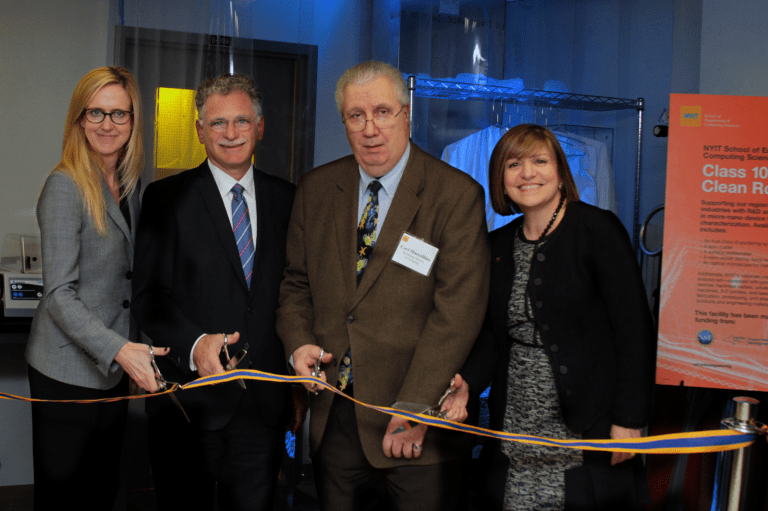
The New York Institute of Technology unveiled Nassau County’s first and only class “10,000 clean room” at its Old Westbury campus on Feb. 25.
“The idea is to enhance our research capacity here at NYIT,” Dean of Engineering and Computer Sciences Nada Anid said.
Anid said NYIT’s clean room will enable students, faculty members, and industry researchers to perform experiments in an atmosphere that allows only 10,000 particles per cubic foot of air.
In comparison, typical office building air contains 500,000 to 1,000,000 such particles per cubic foot of air.
The facility houses a sputtering machine and microscopy tools that allow researchers to nano-engineer unique composite materials and create microchips, sensors, and implantable and wearable medical devices according to Anid.
She said scientists and engineers will use the space to create, test, simulate, and characterize materials and composites, and give students invaluable insights on how material properties and structures work at a sub-molecular level.
Anid emphasized that the facility gives not just NYIT an edge in research but will also help to boost Long Island’s economy by promoting and providing access to advances in high-tech research and development.
In the past, researchers either had to travel south to Stonybrook University or to the city for access to a similar facility to conduct their research.
“Now we can prototype a small device here on our own campus,” Anid said. “And it gives our students and professors more research abilities.”
The “clean room” according to laboratory engineer David Fanning, who is in charge of monitoring the facility and adjacent machine shop, allows for the development of devices with new properties or a prototype of a device.
Fanning explained that the room isn’t for the overall development of a product. Instead, small prototypes or smaller parts of a device can be built in the clean room before a much larger research can be conducted.
“The equipment in this room can be used by engineering students or even medical doctors when they need to build a device,” Fanning said.
He said the addition of the clean room adds another component of engineering and research capacity that NYIT can conduct.
To enter the room, proper protocol of wearing a lab coat made out of paper, booties that roll up the knees, hair nets and gloves in order not to contaminate the room.
“We are here to contribute to advances in electronics, photonics, communications, medicine, and many other fields,” NYIT President Edward Guiliano said in a statement. “We are here living NYIT’s DNA vision of performing applied research for the betterment of society.”
Anid said funding for the research facility was made possible with grants from the Empire State Development Corporation and the National Science Foundation.






